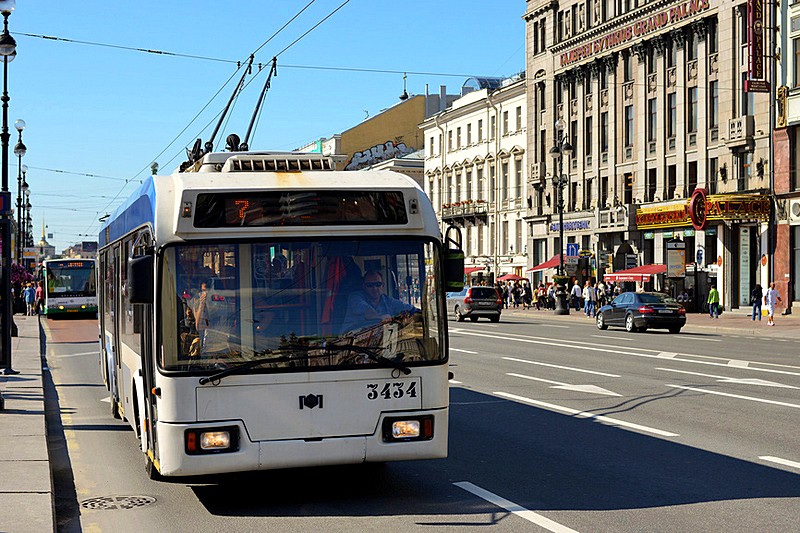Trolleybuses in St. Petersburg
Trolleybus stops are marked with signs with blue letter "T". They operate exactly the same way as St. Petersburg's buses and are very common in the centre of the city. The only disadvantage of trolleybuses is that they cannot change lanes, and are therefore more prone to delays when congestion gets bad.

All trolleybuses have a conductor on board, and you can either pay them for a single journey or use a magnetic travel card, which you need to check on a card reader as soon as you have boarded.
The first St. Petersburg trolleybus was test-driven by engineer P.A. Freze on March 31, 1902, but regular trolleybus services did not begin until October 21, 1936. The first trolleybuses were built locally, though after a while the city started buying better vehicles built in the city of Yaroslavl (on Volga River). By WWII Leningrad had 130 trolleybuses, serving 5 lines. All trolleybuses stopped running during the Siege of Leningrad and services were resumed only in May 1944.
Having the advantage of being environmentally-friendly, the trolleybus network has grown since the War. In 1990 the city had 1 300 trolleybuses that carried 550 million passengers a year.

